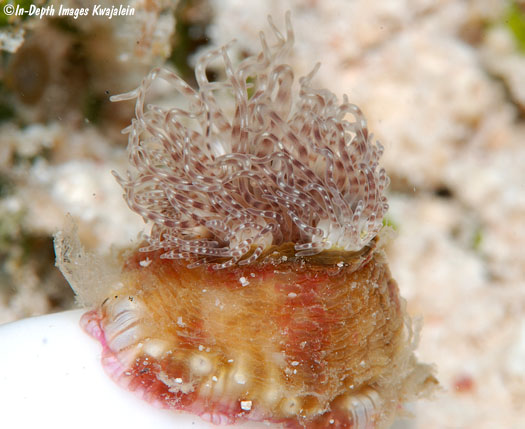
This anemone is found on shells occupied by a few hermit crabs in the genus Dandanus, particularly D. gemmatus and D. deformis in the Marshalls. The stinging cells of the anemone are said to help protect the hermit crab from predation by octopus and other predators. The anemones provide such an advantage to the hermit that the crabs will take the anemones with them when they move to new shells, carefully peeling them off the old one and holding them against the new one until they attach. The anemone, in turn, gets a mobility it would not have otherwise, which may help it capture food as the crab moves around and hides under rocks and in algae patches. It is also possible that the hermit's mobility protects the anemone from predation by certain sea stars. Once in an aquarium, I watched a hermit change to a larger shell. The crab spent some time peeling the anemones off the old shell and placing them on its new one, but it ended up leaving a couple of the anemones behind on the old shell. Almost right after the crab moved away, a young coral and anemone eating seastar, Culcita novaeguinea, moved over and started feeding on the leftover anemones.

When disturbed, the anemones will release these long, thin orange or pink threads called acontia that apparently are loaded with the nematocysts, or stinging cells.
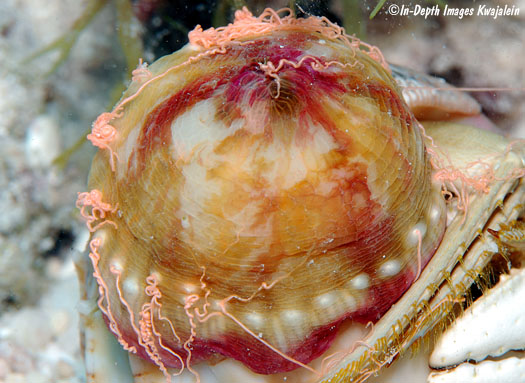
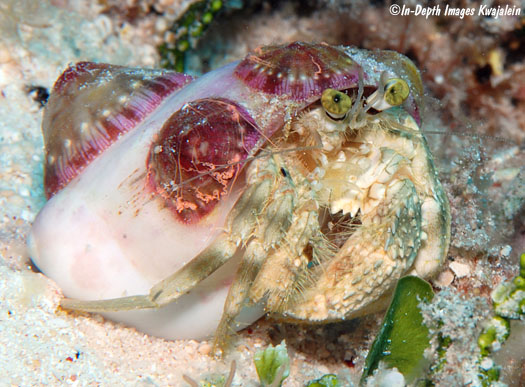

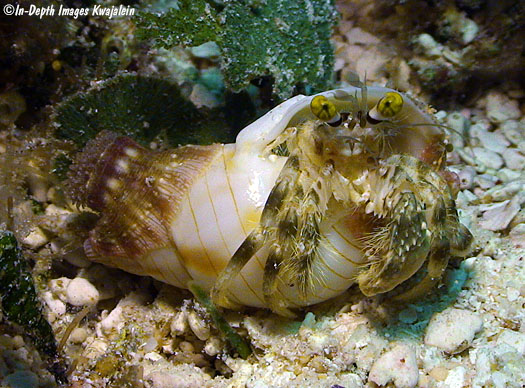
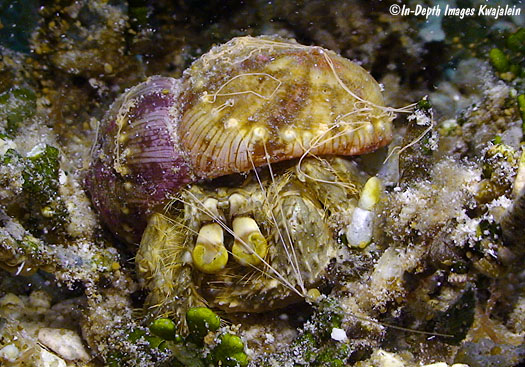
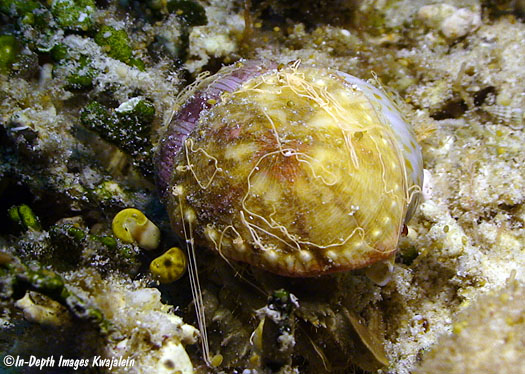
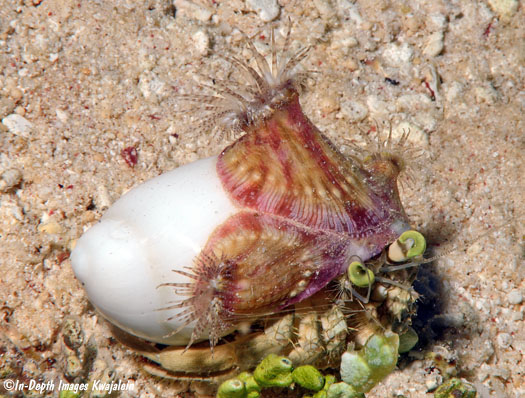
Created 26 July 2018
Updated 24 May 2023